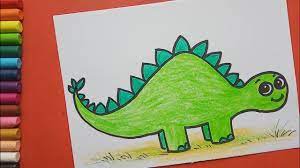
As a lover of all things prehistoric, there's nothing quite like the thrill of bringing dinosaurs to life on paper. Whether you're a seasoned artist or a beginner, mastering the art of dinosaur drawing is a fun and rewarding activity that can be enjoyed by all. In this article, I'll be sharing my tips and tricks for perfecting your dinosaur drawing skills, from understanding the anatomy of these fascinating creatures to adding color and shading to your drawings.
Introduction to Dinosaur Drawing
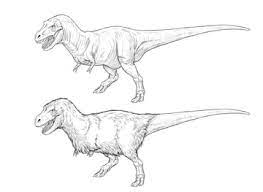
The first step to becoming a great dinosaur artist is to have a basic understanding of the creatures you're drawing. Dinosaurs were a diverse group of reptiles that lived millions of years ago, and there were many different types with unique shapes and sizes. Before you start drawing, it's important to do some research on the specific dinosaur you want to depict, paying attention to their skeletal structure, musculature, and other distinctive features.
When it comes to dinosaur drawing, there are many different styles and approaches you can take. Some artists prefer to create realistic depictions of dinosaurs, while others enjoy adding a more cartoonish or stylized flair to their work. Whatever your preferred style may be, the key is to practice regularly and experiment with different techniques until you find what works best for you.
Understanding the Anatomy of Dinosaurs
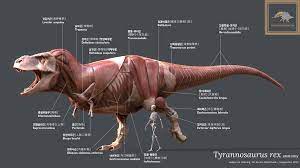
In order to create accurate and believable dinosaur drawings, it's essential to have a good understanding of their anatomy. Dinosaurs were complex creatures with unique skeletal structures and musculature, and getting these details right can make all the difference in your artwork.
One of the most important things to keep in mind when drawing dinosaurs is their size and proportion. Depending on the species, dinosaurs could range in size from the size of a chicken to the size of a school bus. Make sure to research the specific dinosaur you're drawing and pay close attention to the proportions of their body parts in relation to one another.
Another key aspect of dinosaur anatomy to consider is their skeletal structure. Dinosaurs had many distinctive skeletal features, such as elongated necks, sharp claws, and bony crests on their heads. Paying attention to these details and accurately depicting them in your drawings can help bring your dinosaurs to life.
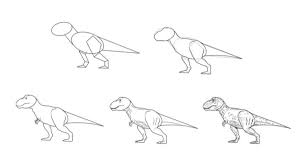
Basic Tools and Materials Needed for Dinosaur Drawing
To get started with dinosaur drawing, you don't need much in the way of supplies. Here are some of the basic tools and materials you'll need:
- Pencils: You'll want to have a range of pencils with different lead hardnesses, from soft (B) to hard (H).
- Erasers: Having a good eraser is essential for making corrections and adjustments to your drawings.
- Paper: You can use any type of paper you like, but many artists prefer to use drawing paper or sketch pads.
- References: It's helpful to have reference images or books on hand to help guide your drawings and ensure accuracy.
With these basic supplies, you're ready to get started on your dinosaur drawing journey.
Step-by-Step Guide: How to Draw a T-Rex
The Tyrannosaurus Rex, or T-Rex, is one of the most iconic dinosaurs of all time. Here's a step-by-step guide for drawing this fearsome creature:
Start with a basic sketch of the T-Rex's body, using light pencil strokes. Pay attention to the proportions of the head, body, and limbs.
Add details to the sketch, such as the T-Rex's distinctive skull shape, sharp teeth, and muscular body.
Refine the sketch and add shading to give the T-Rex a sense of depth and dimension.
Once you're happy with the sketch, go over it with a darker pencil to create a more finished drawing.
Remember to take your time, and don't be afraid to make corrections and adjustments as you go.
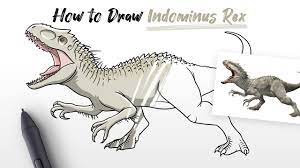
Step-by-Step Guide: How to Draw an Indominus Rex
The Indominus Rex is a fictional hybrid dinosaur from the Jurassic World franchise. Here's a step-by-step guide for drawing this unique creature:
Start by sketching the basic shape of the Indominus Rex's body. Pay attention to its distinctive features, such as its elongated snout and bony head crest.
Add details to the sketch, such as the sharp teeth and muscular body. The Indominus Rex also has small arms, so make sure to depict those accurately.
Add shading to give the drawing a sense of depth and dimension.
Once you're happy with the sketch, go over it with a darker pencil to create a more finished drawing.

Step-by-Step Guide: How to Draw a Pterodactyl
Pterodactyls were flying reptiles that lived during the time of the dinosaurs. Here's a step-by-step guide for drawing these fascinating creatures:
Start by sketching the basic shape of the pterodactyl's body, paying attention to its wingspan and elongated beak.
Add details to the sketch, such as the texture of the wings and the shape of the feet.
Add shading to give the drawing a sense of depth and dimension.
Once you're happy with the sketch, go over it with a darker pencil to create a more finished drawing.

Tips for Drawing Realistic Dinosaur Features
To create realistic and believable dinosaur drawings, it's important to pay attention to the details. Here are some tips for drawing realistic dinosaur features:
- Study reference images and books to get a better understanding of dinosaur anatomy.
- Pay attention to the proportions of the dinosaur's body parts in relation to one another.
- Use shading to create depth and dimension in your drawings.
- Experiment with different techniques, such as crosshatching and stippling, to create texture and detail.
- Don't be afraid to make corrections and adjustments as you go.
With practice and patience, you'll be able to create realistic dinosaur drawings that are sure to impress.

How to Add Color and Shading to Your Dinosaur Drawings
Adding color and shading to your dinosaur drawings can help bring them to life and give them a sense of depth and dimension. Here are some tips for adding color and shading to your dinosaur drawings:
- Use colored pencils or markers to add color to your drawings.
- Start with a base color and gradually layer on darker shades to create depth and shadow.
- Use a blending tool, such as a blending stump or cotton swab, to blend colors together and create a smoother look.
- Pay attention to the direction of the light source in your drawing and use shading to create highlights and shadows.
Remember to take your time and experiment with different techniques to find what works best for you.
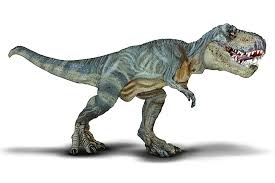
Inspiration and Resources for Dinosaur Drawing
If you're looking for inspiration and resources for your dinosaur drawing journey, there are many great options available. Here are a few ideas to get you started:
- Check out books and online resources on dinosaur anatomy and paleontology.
- Visit museums and exhibits featuring dinosaur fossils and artwork.
- Join online communities and forums dedicated to dinosaur drawing and art.
- Follow the social media accounts of professional dinosaur artists for inspiration and tips.
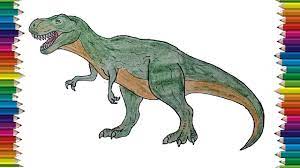
Conclusion
Drawing dinosaurs can be a fun and rewarding activity for artists of all levels. By understanding the anatomy of these fascinating creatures, practicing regularly, and experimenting with different techniques, you can perfect your dinosaur drawing skills and create artwork that is sure to impress. So grab your pencils and get started on your dinosaur drawing journey today.
Happy drawing! Share your dinosaur drawings with us on social media using the hashtag #dinosaurart.

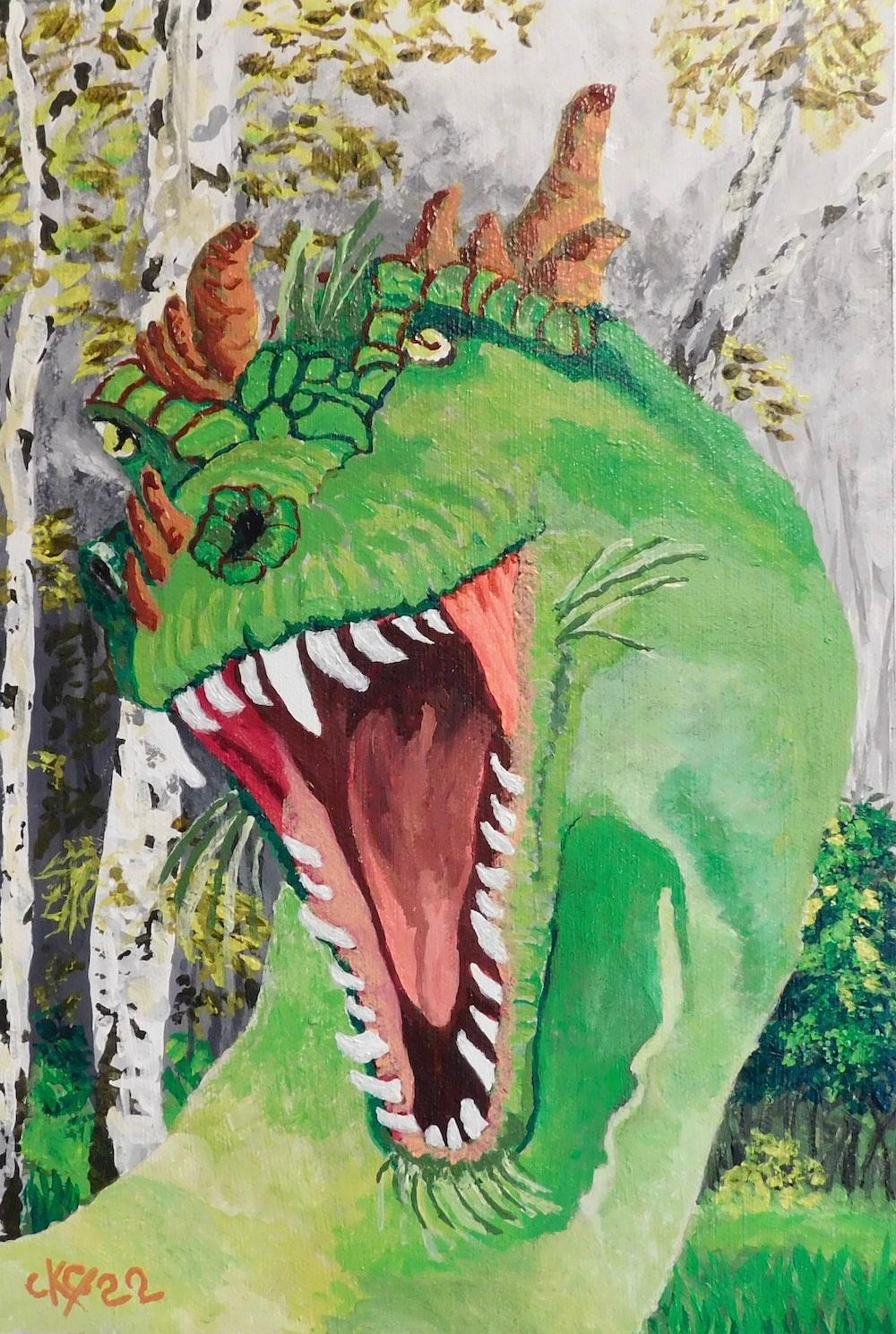





Leave a comment
All comments are moderated before being published.
This site is protected by hCaptcha and the hCaptcha Privacy Policy and Terms of Service apply.